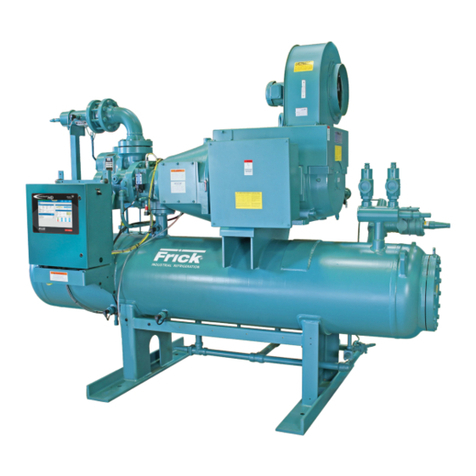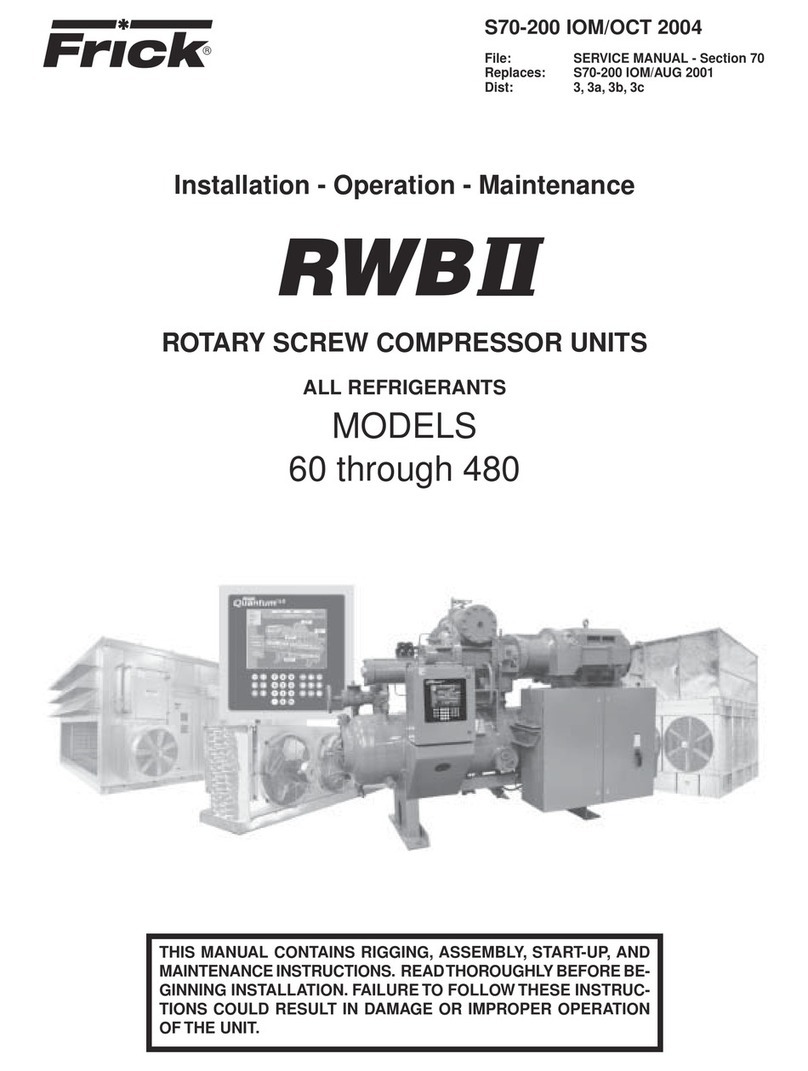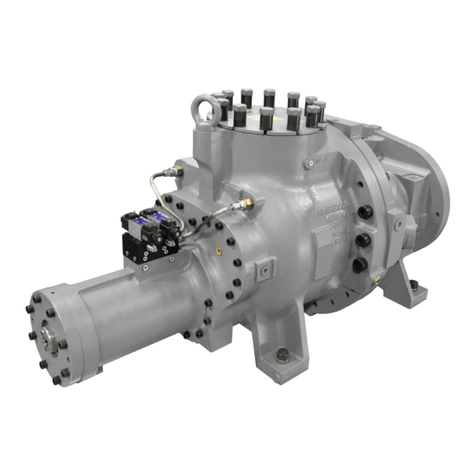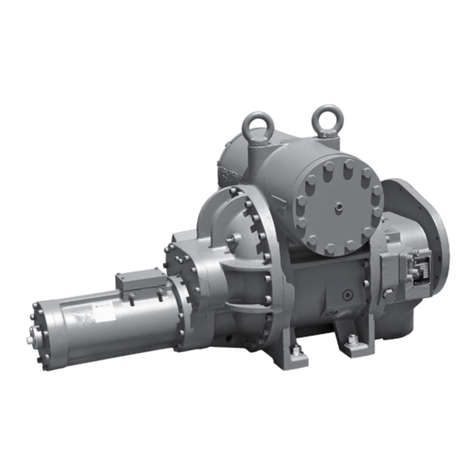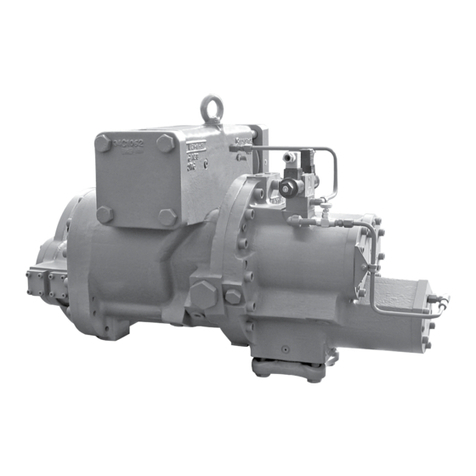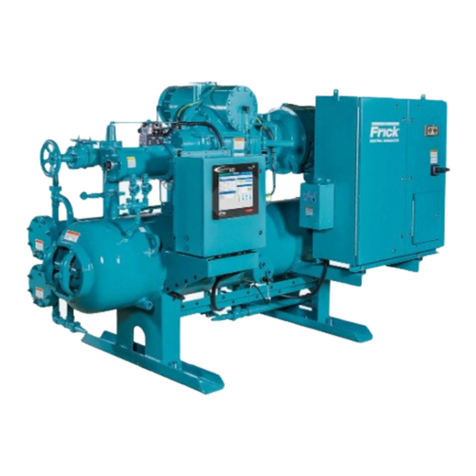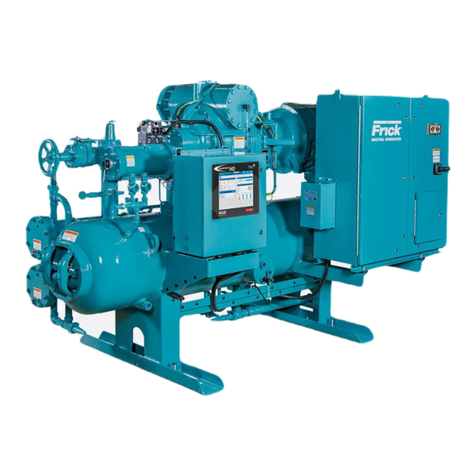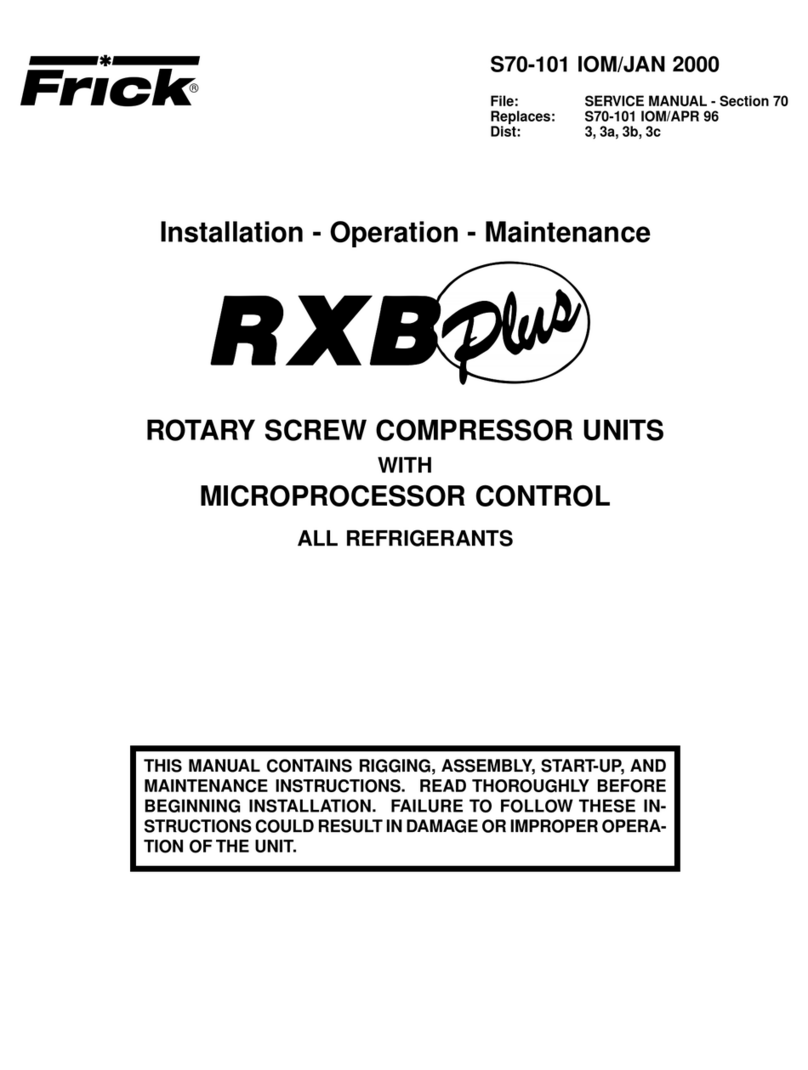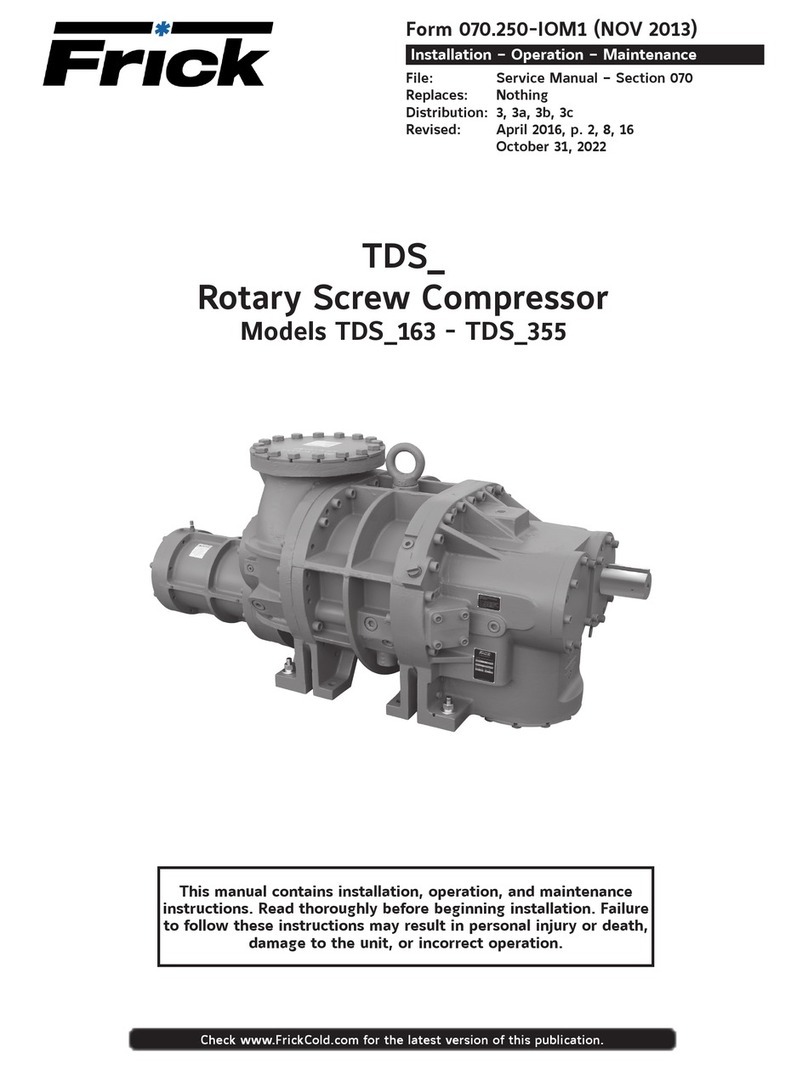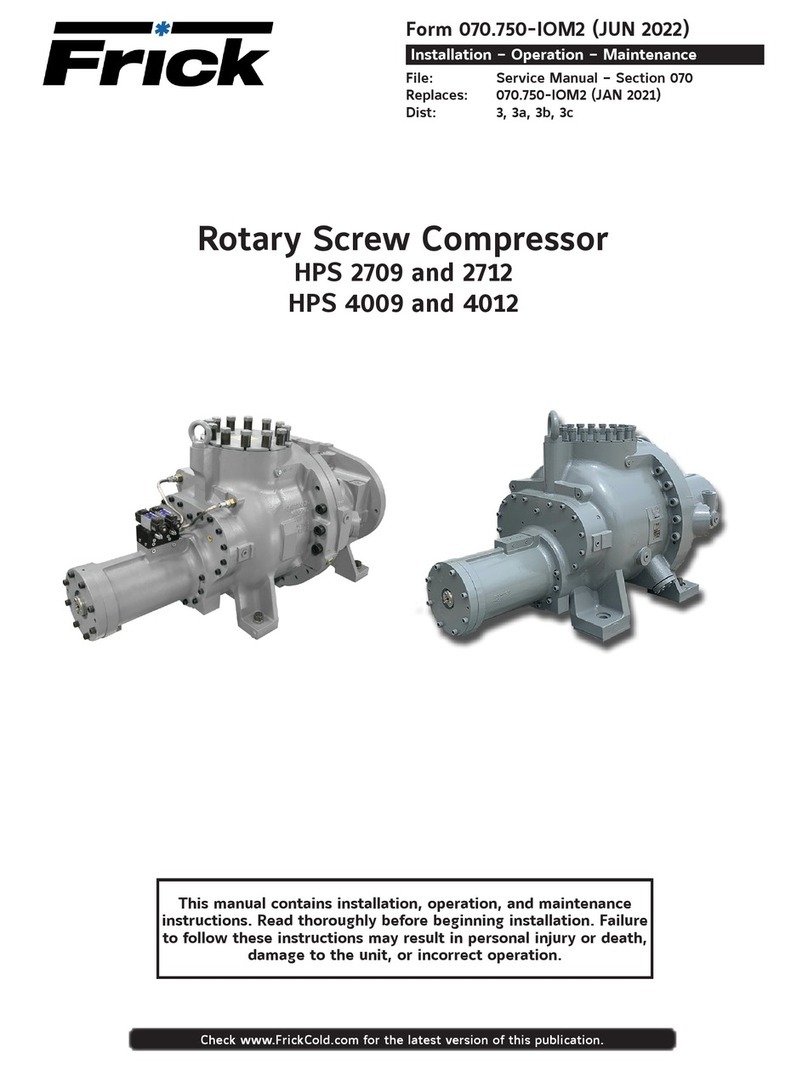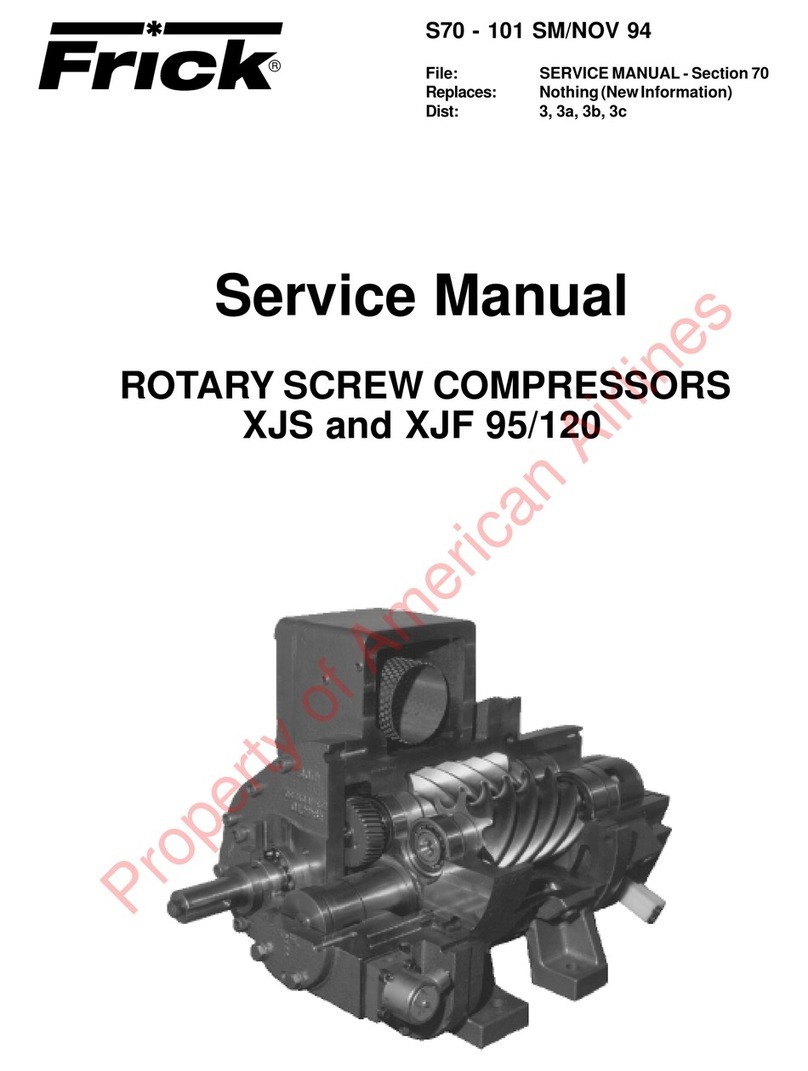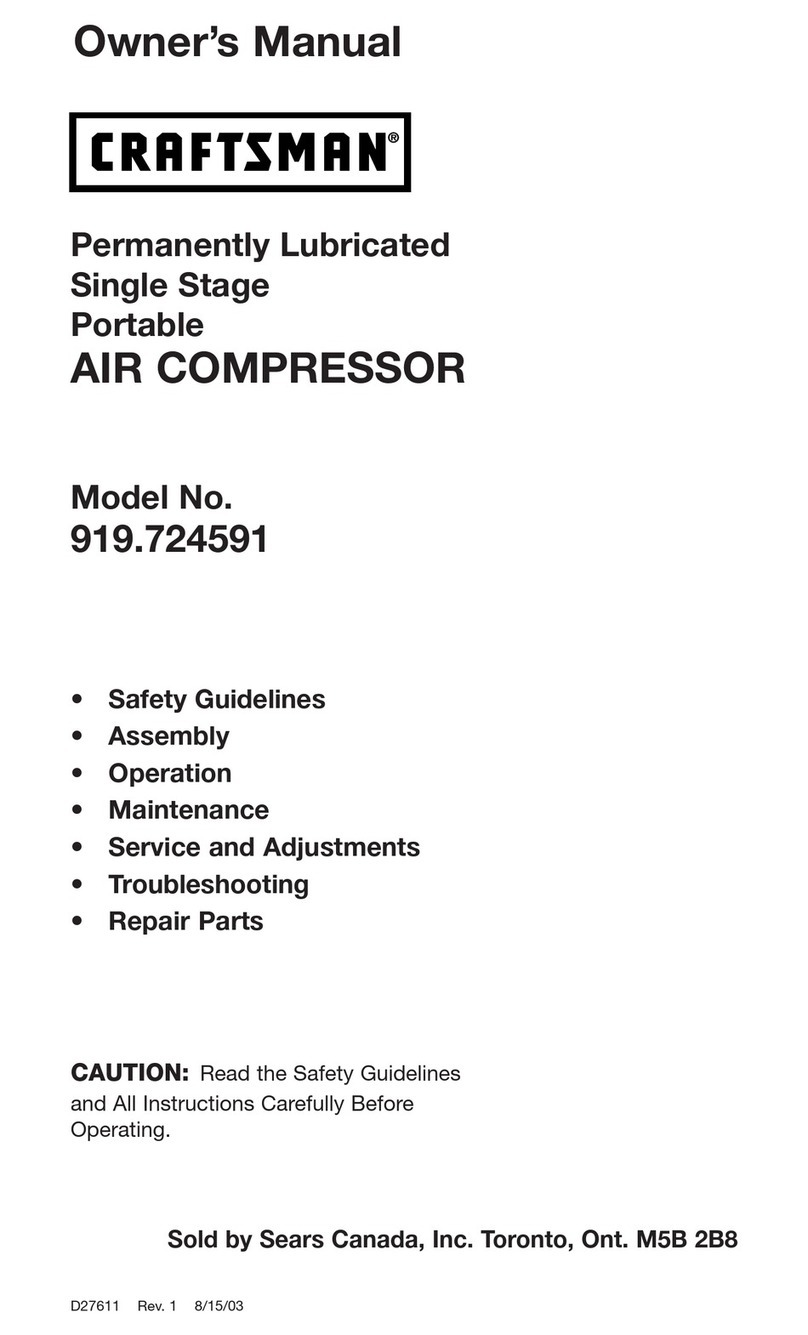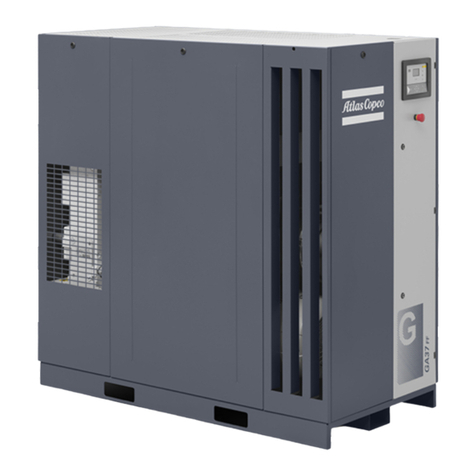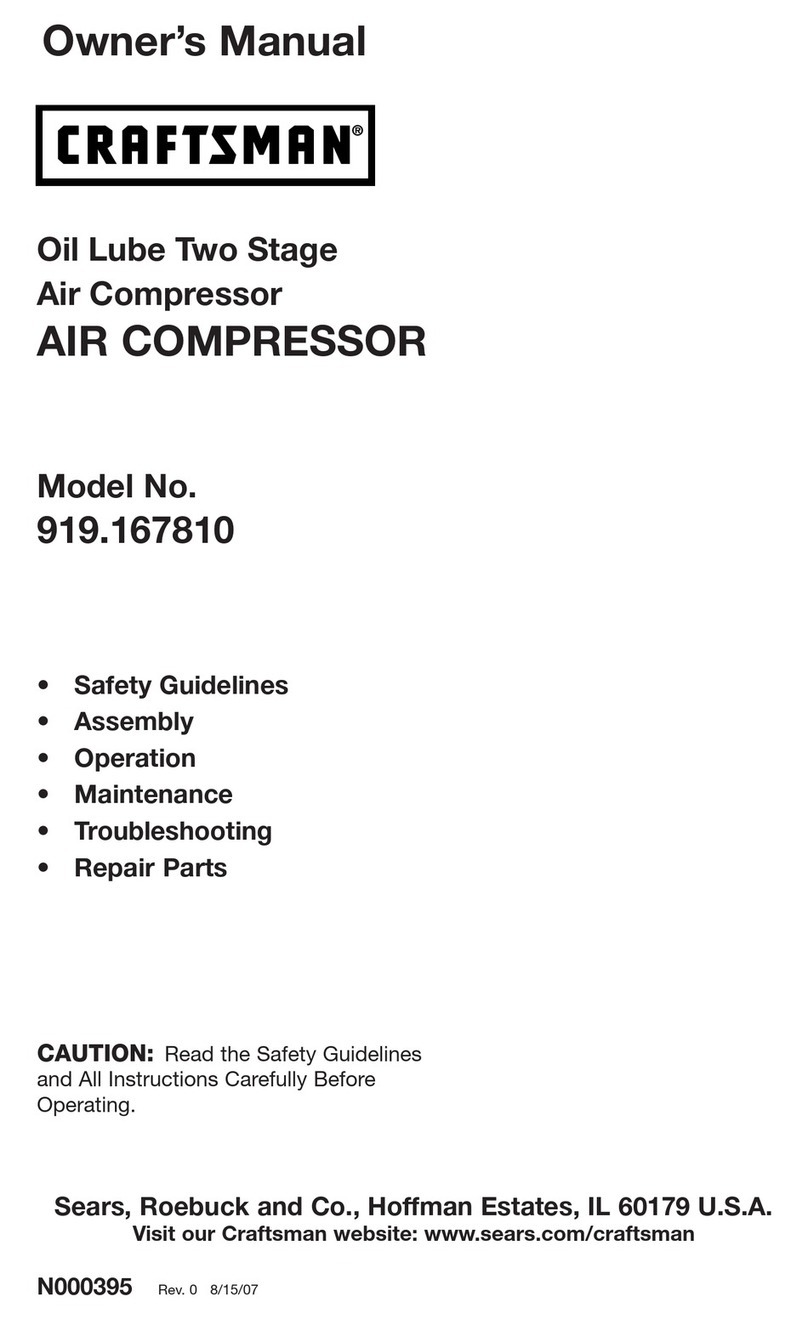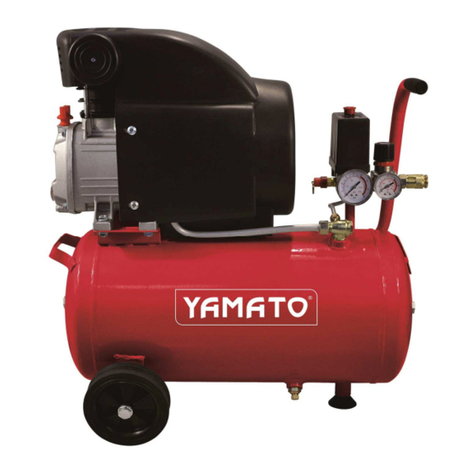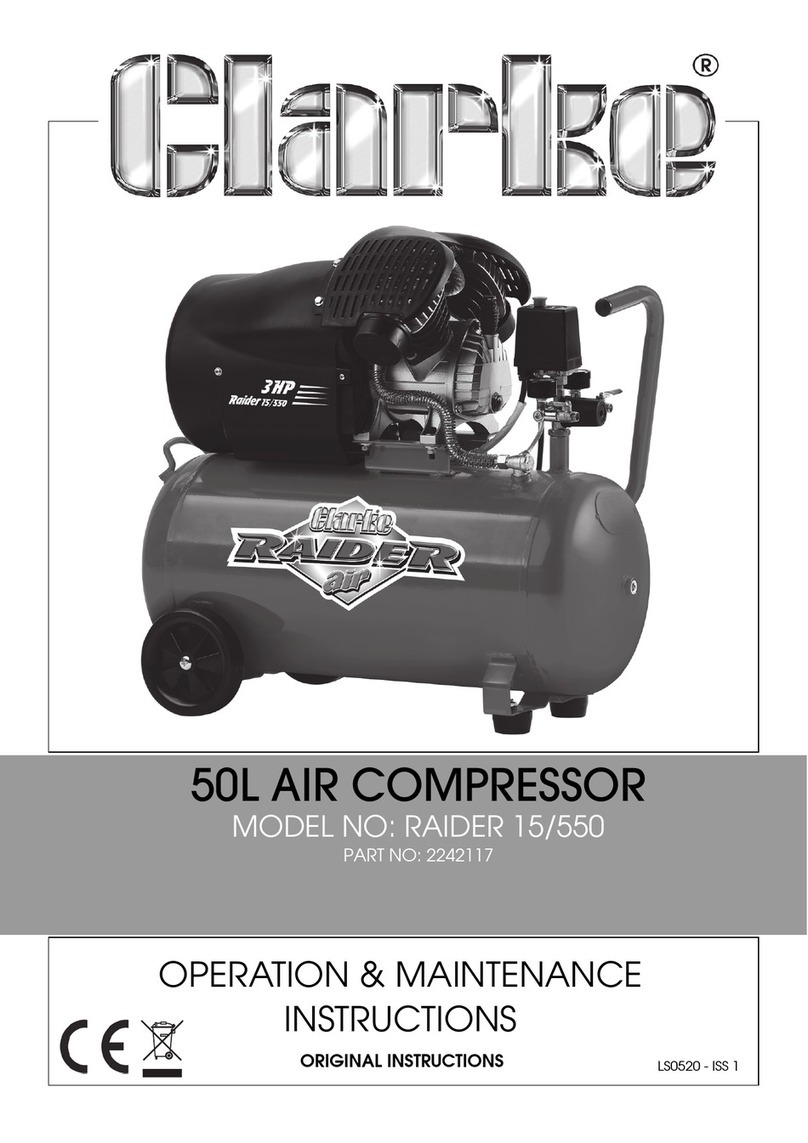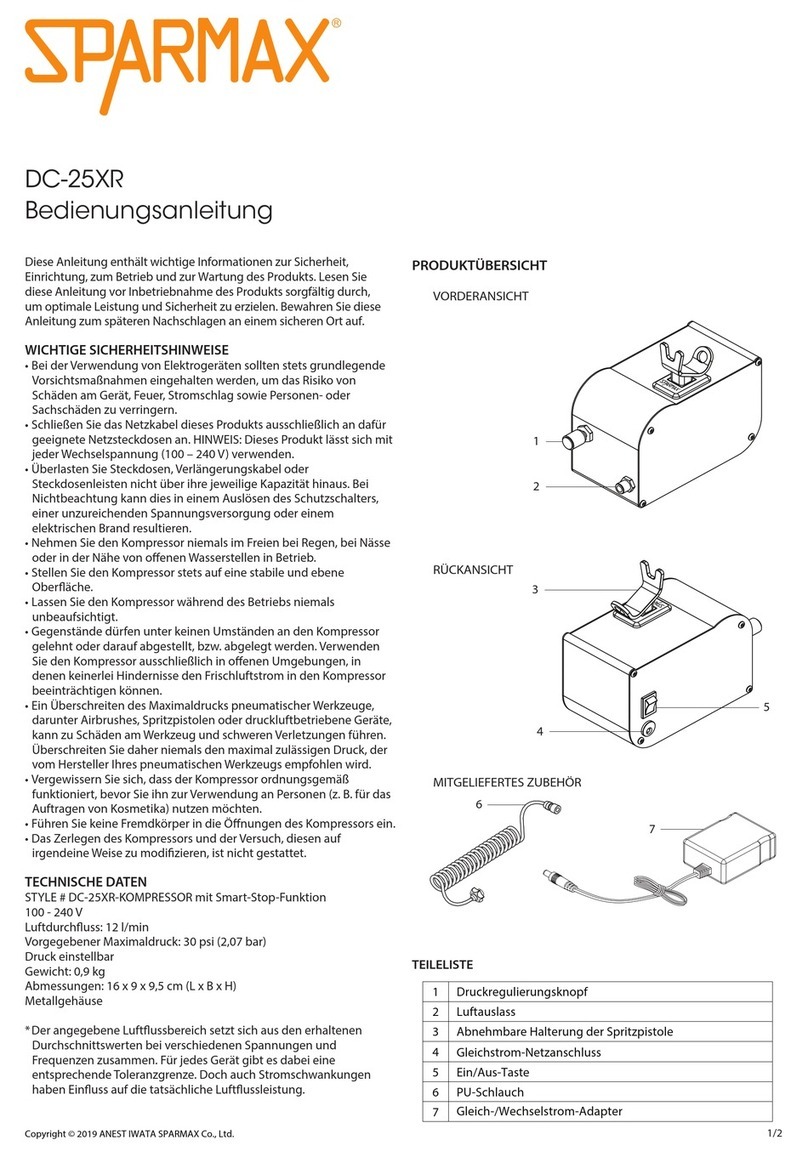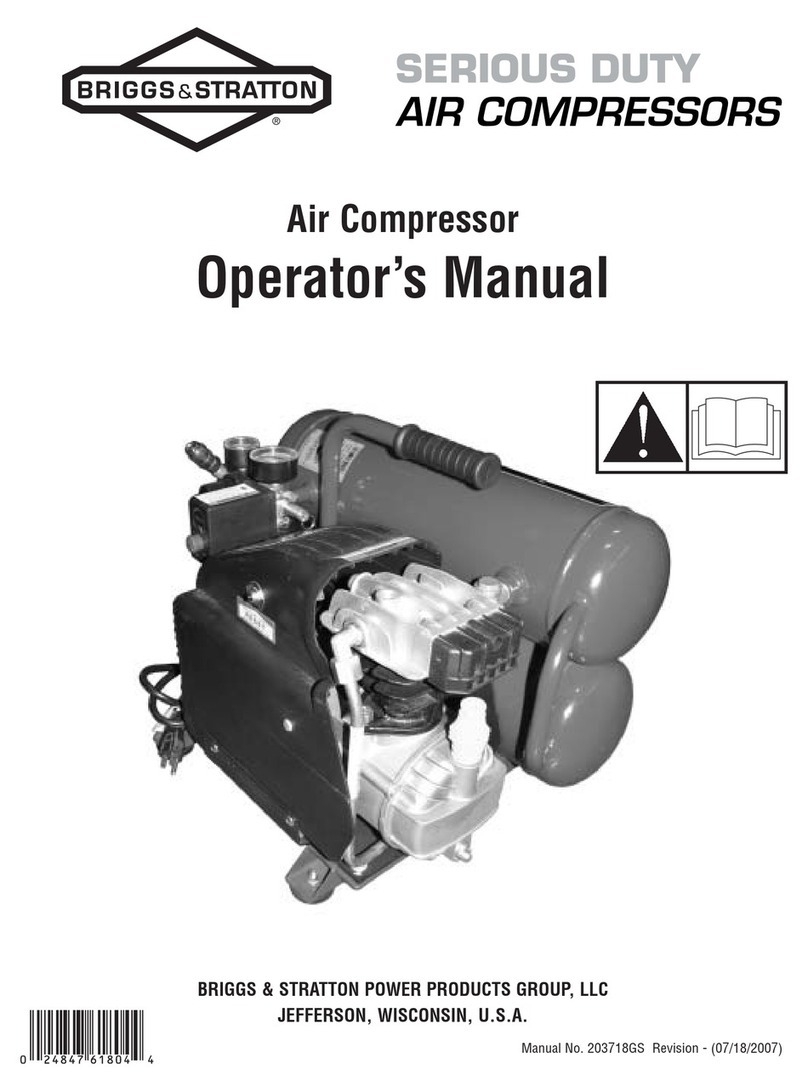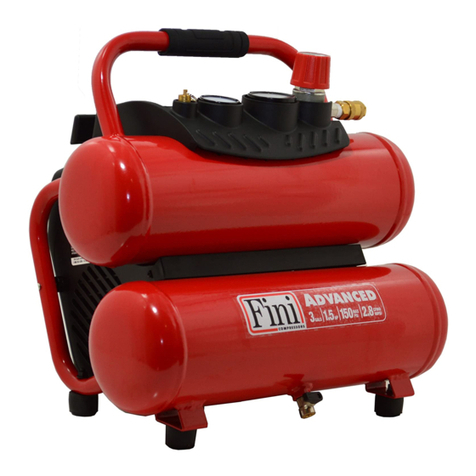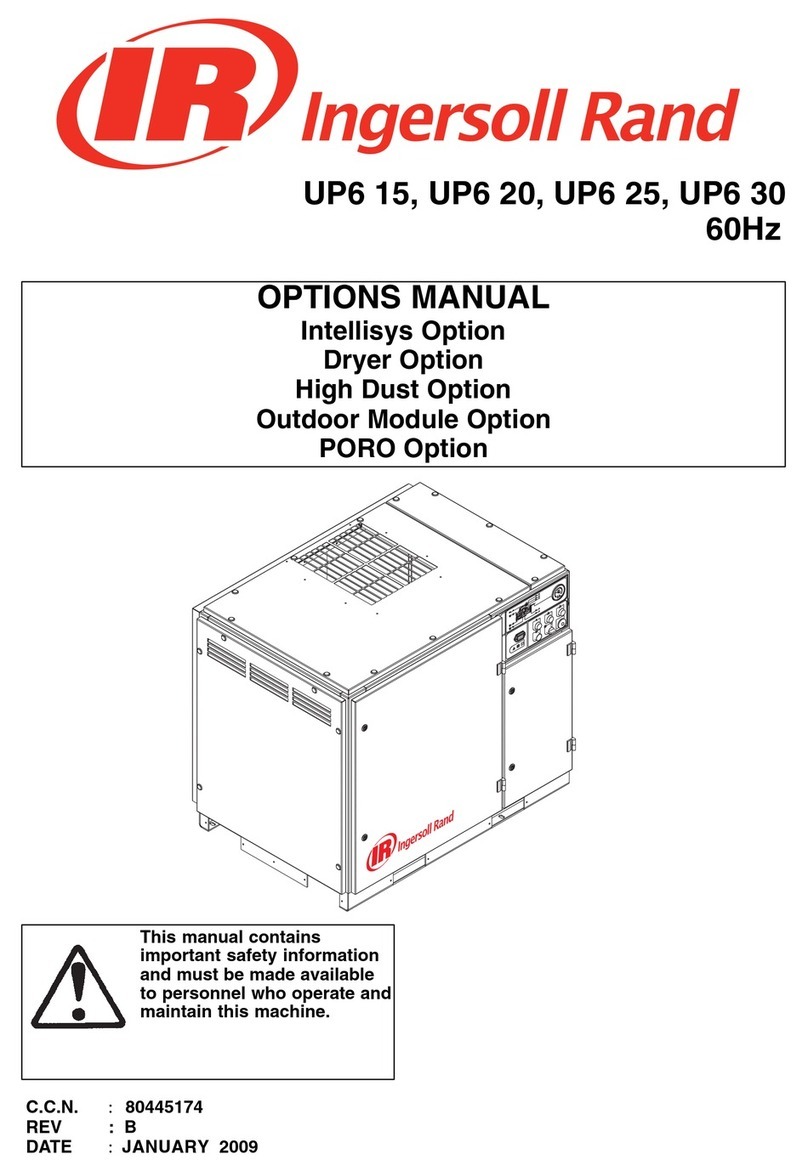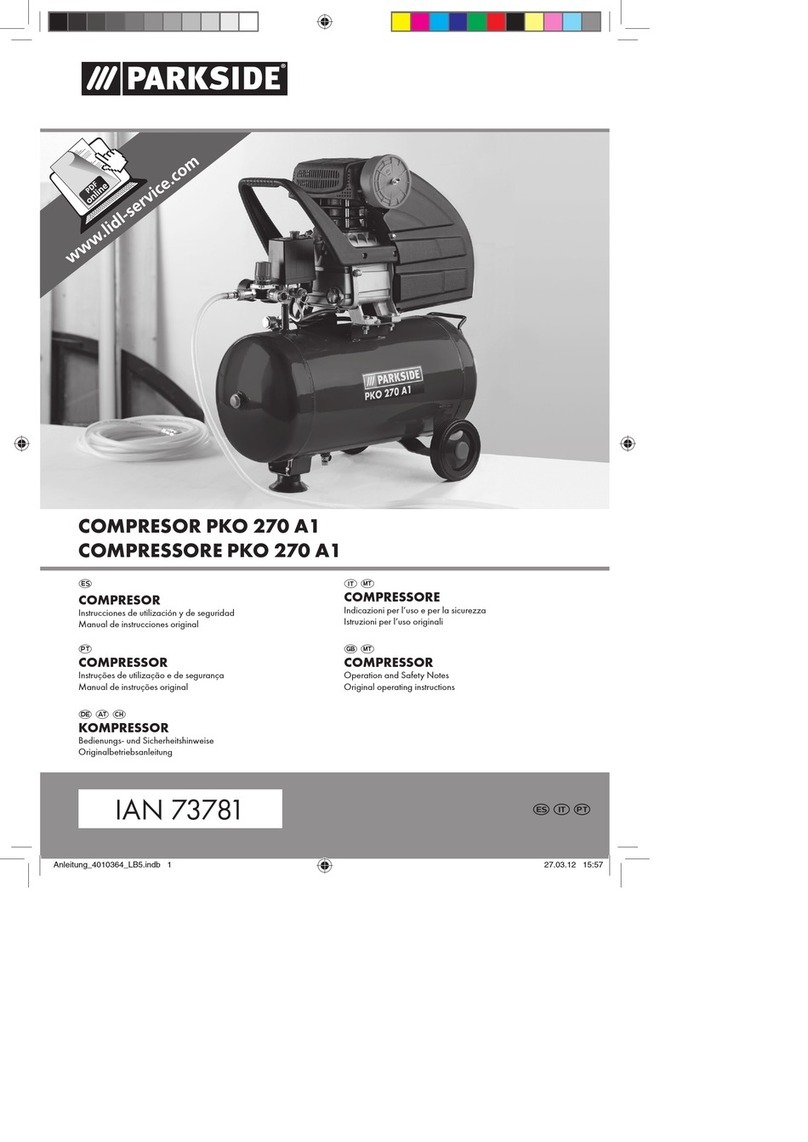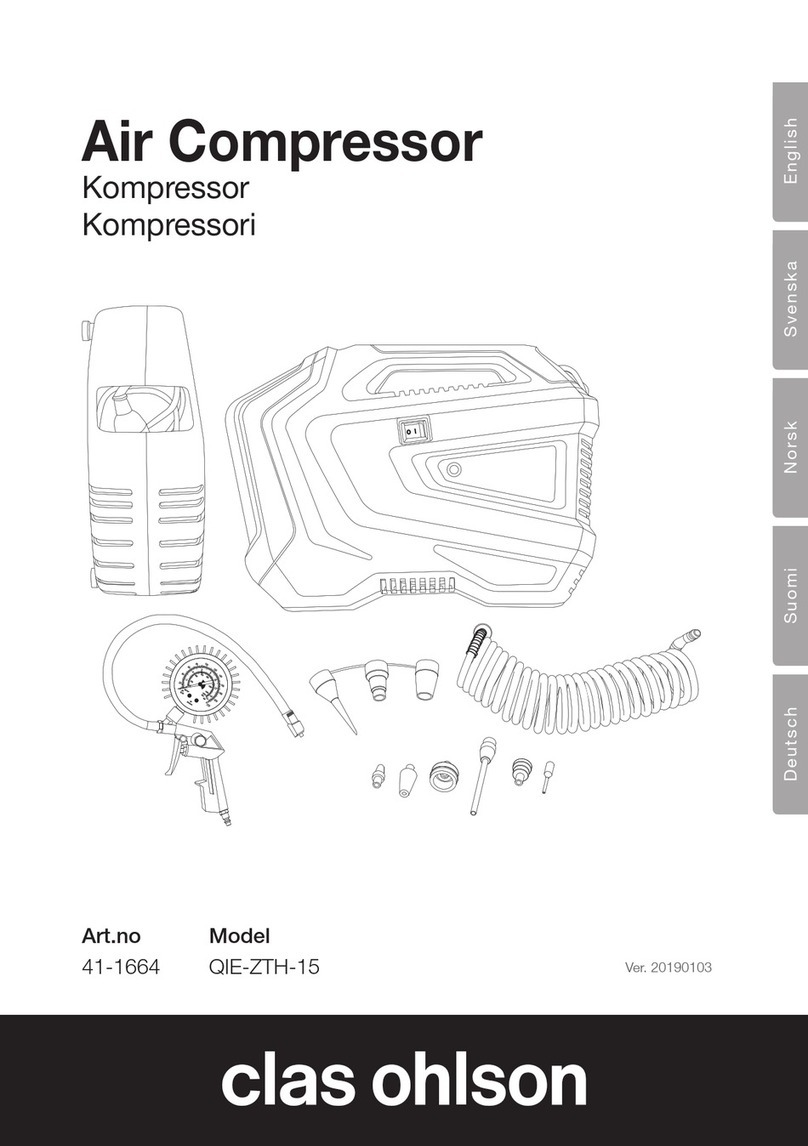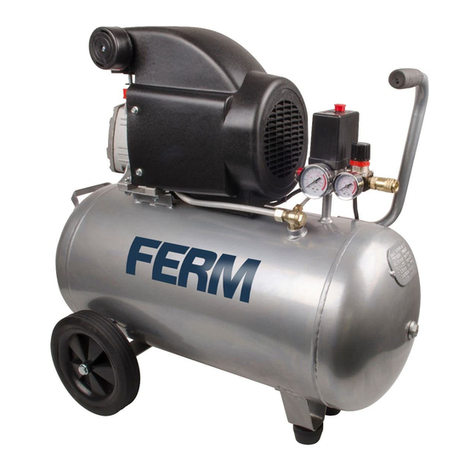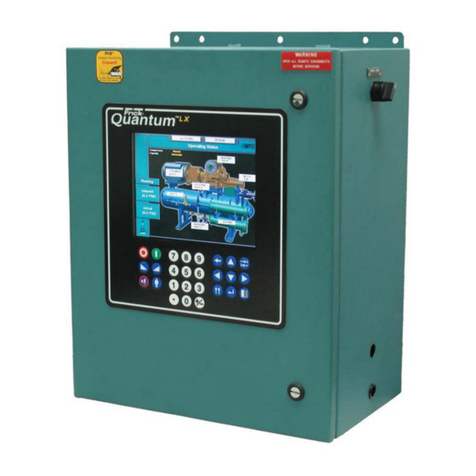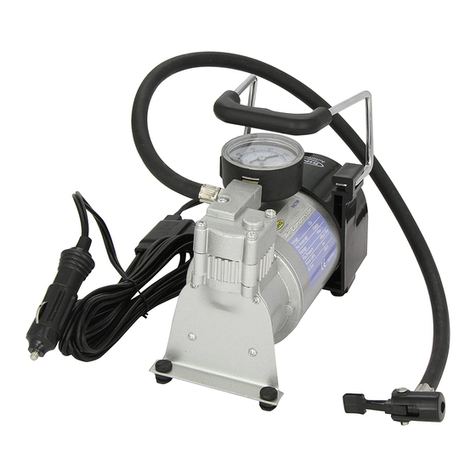
070.655-IOM (FEB 22)
Page 2
SBTP Rotary Screw Compressor
Installation - Operation - Maintenance
Table of Contents
General information
Design limitations ............................................................. 3
Job inspection .................................................................. 3
Standard bare compressor ............................................... 3
Transit damage claims ...................................................... 3
Compressor identification ................................................ 3
Description........................................................................ 4
Frick SBTP compressor ............................................... 4
Compressor lubrication system ................................... 4
Oil pump....................................................................... 5
Construction details...................................................... 5
Installation
Design limits ..................................................................... 7
Outline dimensions ........................................................... 7
Holding charge and storage ............................................ 15
Rigging and handling....................................................... 15
Foundation ..................................................................... 15
Customer connections .................................................... 16
Compressor oil ................................................................ 16
Oil pump ......................................................................... 16
Compressor..................................................................... 16
Mounting the motor: foot mounted only .................... 16
Connecting the compressor to the motor .................. 16
Aligning the coupling.................................................. 17
Oil heaters ...................................................................... 17
Oil filters ........................................................................ 17
Oil cooling requirements ................................................. 17
Natural gas applications ............................................. 17
Dehydration or evacuation test ....................................... 17
Installing electrical components...................................... 18
Slide stop transmitter................................................. 18
Capacity slide valve transmitter.................................. 18
Directional control valves .......................................... 18
Operation
Operation and start-up instructions ............................... 19
Compressor hydraulic system ........................................ 19
Volumizer volume ratio control ...................................... 20
Low ambient operation .................................................. 20
Initial start-up ................................................................ 20
Initial start-up procedure .......................................... 20
Normal start-up procedure ........................................ 20
Maintenance
General information ....................................................... 21
Normal maintenance operations .................................... 21
General maintenance ................................................ 21
Changing the oil ........................................................ 21
Maintenance program ............................................... 21
Maintenance schedule..................................................... 22
Vibration analysis............................................................ 22
Oil quality and analysis ................................................... 22
Operating log ................................................................. 22
Troubleshooting guide .................................................... 23
Abnormal operation analysis and correction ............. 23
Replacing the capacity linear transmitter: slide valve 23
Replacing the
volumizer transmitter: slide stop.............23
Replacing the bare compressor ...................................... 24
Long-term storage.......................................................... 24
Preparing the compressor for storage............................. 25
Maintaining the compressor............................................ 25
Shutdown due to incorrect oil pressure: high stage
and booster ............................................................ 25
Troubleshooting the SBTP compressor .......................... 26
Troubleshooting the oil pump and system....................... 26
Troubleshooting the hydraulic system ............................. 27
Forms
Compressor prestart checklist......................................... 28
Drive train alignment....................................................... 29
Operating log sheet ........................................................ 29
Vibration data sheet........................................................ 30
Indicates an imminently hazardous situation, which if not avoided, results in death or serious
injury.
Indicates a potentially hazardous situation or practice, which if not avoided, results in death or
serious injury.
Safety precaution denitions
Indicates a potentially hazardous situation or practice, which if not avoided, results in damage to
equipment and/or minor injury.
Indicates an operating procedure, practice, or portion thereof,which is essential to highlight.
WARNING
CAUTION
DANGER
NOTICE
